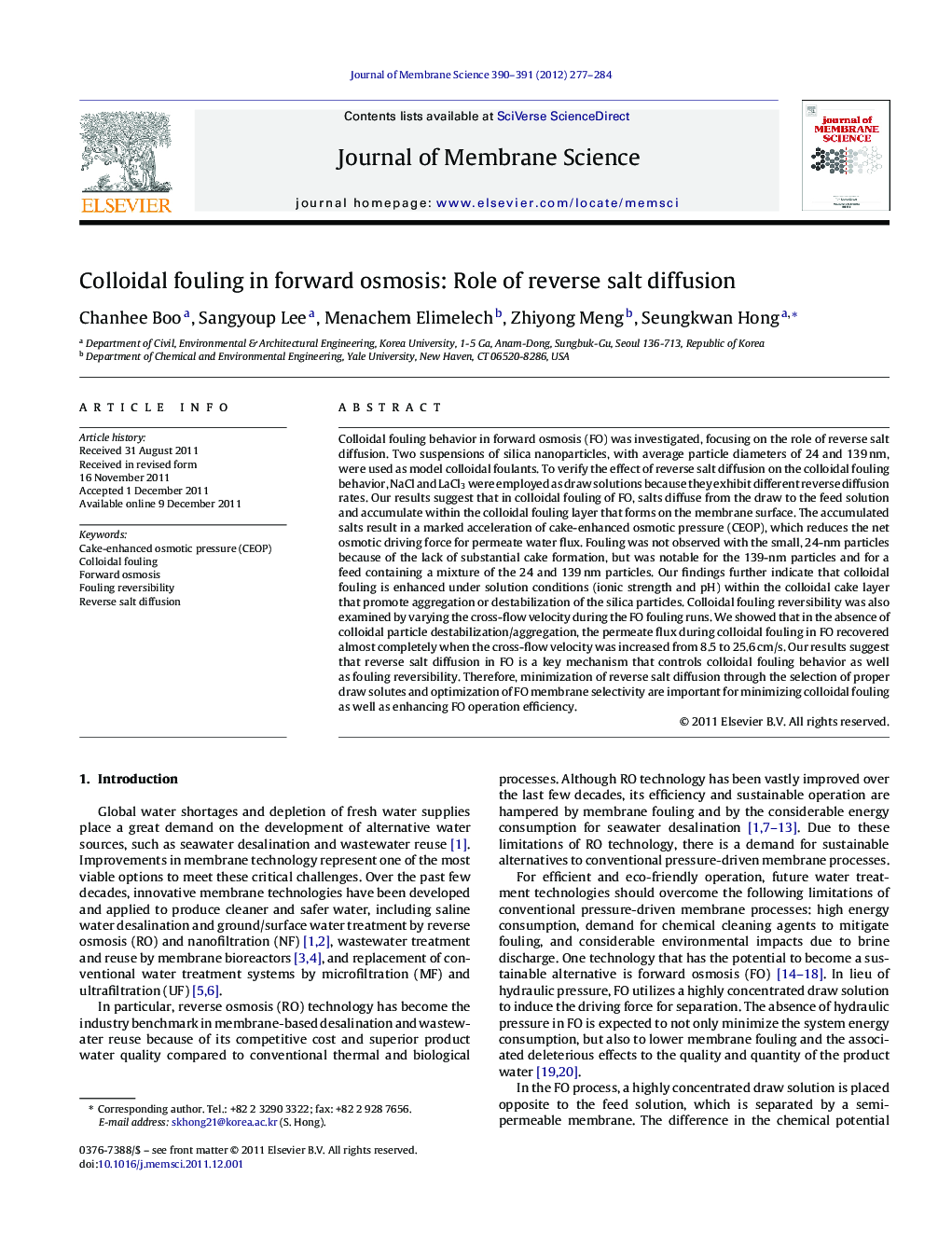| Article ID | Journal | Published Year | Pages | File Type |
|---|---|---|---|---|
| 635130 | Journal of Membrane Science | 2012 | 8 Pages |
Colloidal fouling behavior in forward osmosis (FO) was investigated, focusing on the role of reverse salt diffusion. Two suspensions of silica nanoparticles, with average particle diameters of 24 and 139 nm, were used as model colloidal foulants. To verify the effect of reverse salt diffusion on the colloidal fouling behavior, NaCl and LaCl3 were employed as draw solutions because they exhibit different reverse diffusion rates. Our results suggest that in colloidal fouling of FO, salts diffuse from the draw to the feed solution and accumulate within the colloidal fouling layer that forms on the membrane surface. The accumulated salts result in a marked acceleration of cake-enhanced osmotic pressure (CEOP), which reduces the net osmotic driving force for permeate water flux. Fouling was not observed with the small, 24-nm particles because of the lack of substantial cake formation, but was notable for the 139-nm particles and for a feed containing a mixture of the 24 and 139 nm particles. Our findings further indicate that colloidal fouling is enhanced under solution conditions (ionic strength and pH) within the colloidal cake layer that promote aggregation or destabilization of the silica particles. Colloidal fouling reversibility was also examined by varying the cross-flow velocity during the FO fouling runs. We showed that in the absence of colloidal particle destabilization/aggregation, the permeate flux during colloidal fouling in FO recovered almost completely when the cross-flow velocity was increased from 8.5 to 25.6 cm/s. Our results suggest that reverse salt diffusion in FO is a key mechanism that controls colloidal fouling behavior as well as fouling reversibility. Therefore, minimization of reverse salt diffusion through the selection of proper draw solutes and optimization of FO membrane selectivity are important for minimizing colloidal fouling as well as enhancing FO operation efficiency.
Graphical abstractFigure optionsDownload full-size imageDownload high-quality image (177 K)Download as PowerPoint slideHighlights► The important role of reverse salt diffusion in colloidal fouling of FO process is delineated. ► Draw solution type plays a key role in controlling the rate and extent of reverse salt diffusion. ► FO fouling with silica colloids exhibits reversibility after simple physical cleaning. ► Selection of proper draw solute is important for preventing reverse salt diffusion. ► Optimization of membrane selectivity is of paramount importance for efficient operation of FO.
